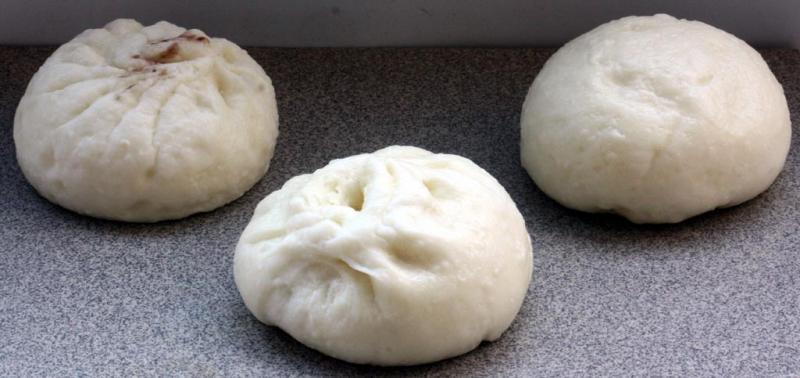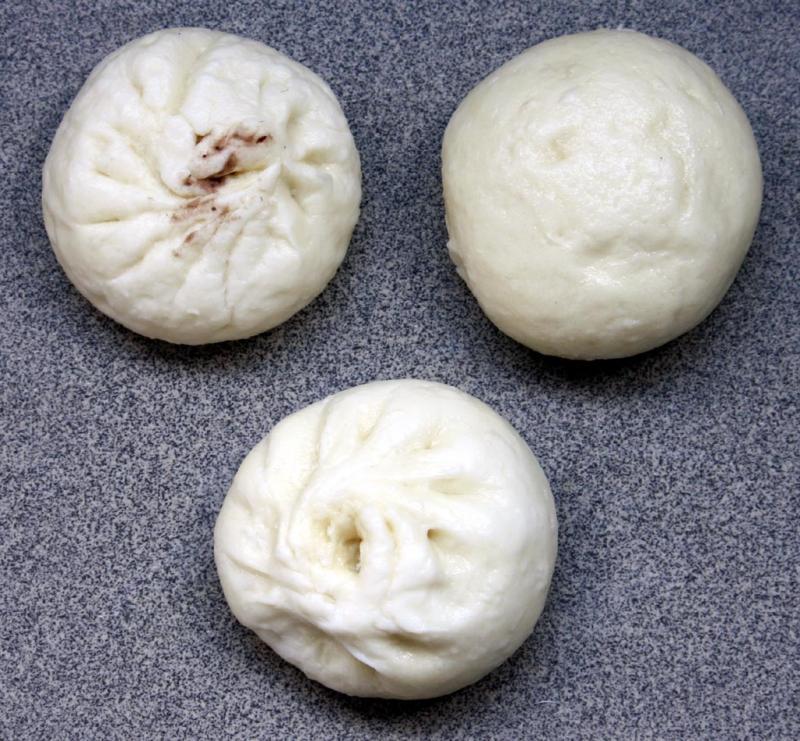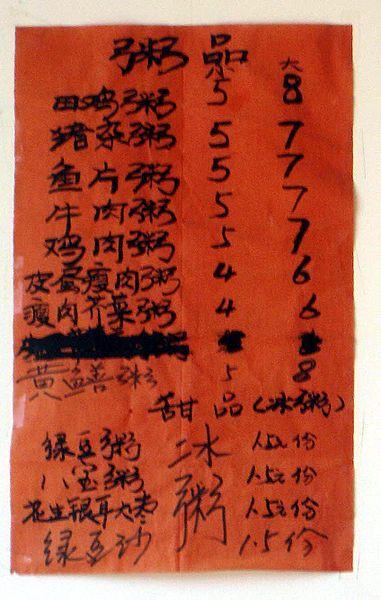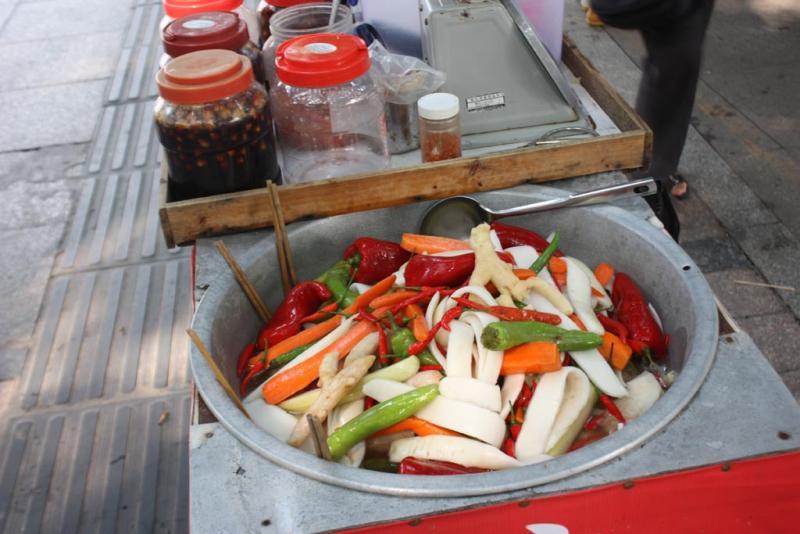Breakfast again
Before getting on to lunch, a few more thoughts came to mind about breakfast.
If you are of a sensitive disposition in the morning, like me (especially after a particularly liquidly refreshing evening) I suggest avoiding hotel breakfast completely. There is nothing many Chinese people like to do, especially the more elderly, than go for breakfast and have a good shout. The breakfast rooms are cacophonous.
Which brings me to Yum Cha or Morning Tea.
Originally from the Cantonese speaking parts of China, but now available pretty much all over, Yum Cha (simplified Chinese: 饮茶; traditional Chinese: 飲茶) is what is generally referred to as DIm Sum in western countries, although strictly speaking dim sum (simp: 点心 ; trad: 點心) is the food served at a yum cha meal rather than the event itself.
Dim sum literally translates as 'little hearts' and consists of mainly small items such as filled buns, rice noodle rolls, cakes etc. In traditional places these items are wheeled round the restaurant on trolleys and you take your pick of what passes by.
Some of these 'little hearts' are vegetarian; most are not. It isn't easy to tell just by looking however. Many a surprise may be lurking inside an innocent looking bun. Two of the three buns below are vegetarian. One certainly isn't. But which?
The answer is the front one. The two at the back contain sweet bean paste (left) and sesame and peanut (right) - the one in front is a pork bun.
Tread carefully and put in your earplugs.
Also, often available at yum cha and in small restaurants etc is congee or rice porridge (粥 zhōu). This is eaten at all times of the day, but often for breakfast. It is a thinnish rice porridge, sometimes eaten as it is (白粥 bái zhōu - rice and water) but usually augmented by something savoury - usually meat based but sometimes pickled vegetables are all that is added. Another common addition is sweetcorn kernels (玉米粥 yù mǐ zhōu). Sweet congees are more vegetarian. One to look for is 'eight treasure congee' (八宝粥/八寶粥 bā bǎo zhōu) . This is rice porridge with added ingredients such as peanuts, jujubes, lotus seeds, lily, Job's tears, ginkgo etc. In my local porridge shop, the only vegetarian options are the sweet congees. Here is their menu:
Translation:
Congee / Porridge:
Frog congee
Pig Offal Congee
Fish congee
Beef congee
Chicken congee
Preserved egg and lean pork congee
Lean pork and leaf mustard congee
Rice field eel congee
Sweet congees
Mung bean congee
Eight treasure congee
Peanut, silver ear fungus, jujube and mung bean congee
Another possible breakfast option is noodles, predominantly rice noodles in the south and wheat in the north, although both can be found most places. Most small noodle places prepare these to order and have bowls of ingredients for you to point at. Beware, however, of them adding stock which will not be vegetarian. Dry noodle dishes are available, but not everywhere.
I think the best bet is to load up on some plain steamed bread from the supermarket or stalls such as this
then hit the streets and find the local snack people. They can keep you going on steamed or roast corn, roast red potatoes, pickles, roast chestnuts, peanuts, fruit etc etc.
The supermarkets sell yoghurts (usually very sweet and thin) and soy milk. Fresh cow's milk is more difficult to obtain outside of the large cities - few supermarkets carry it. Western style bread is also difficult to find, although some places do French style baguettes which are passable if fresh.








